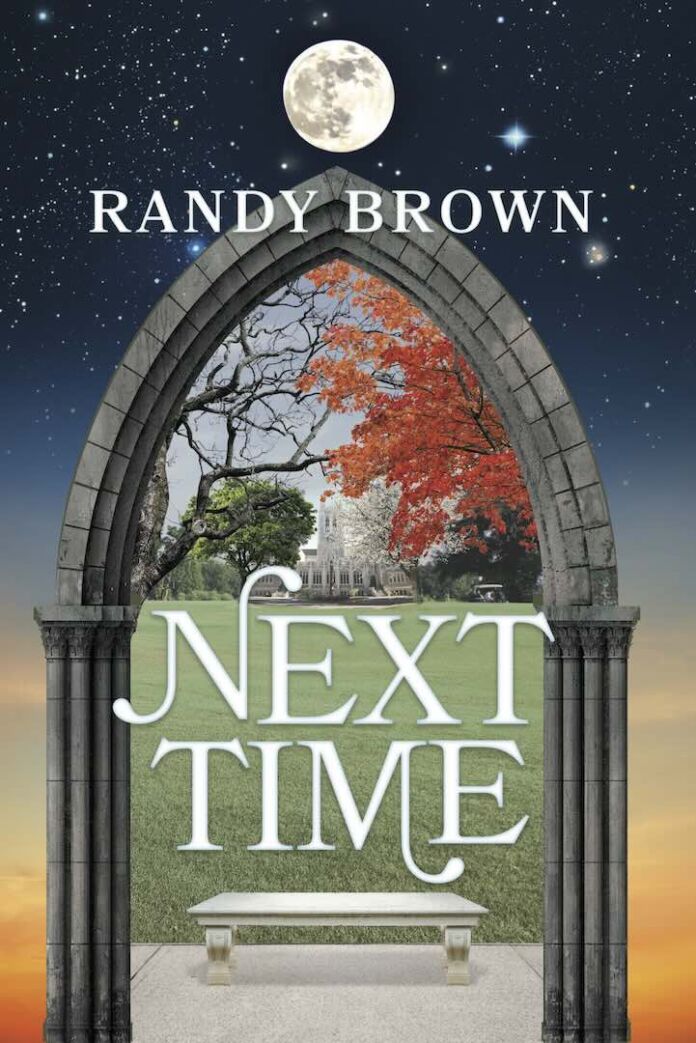A Thousand Years of Waiting
Some love stories span years. A few lucky couples might make it to 50 or 60 years together if they live long enough. But can you imagine a romance that crosses a thousand years of history? In Randy Brown‘s genre-bending novel Next Time, that’s exactly what we get—an epic, century-spanning tale of love and the lengths some people will go to hold onto it.
When William, a grad student in Boston, has a chance encounter with the mysterious Miriam on his college campus, he has no idea he’s about to embark on the romantic adventure of a lifetime…or a thousand lifetimes, as it turns out. Miriam suffers from an extremely rare condition—every few weeks or months, she physically disappears, only to reappear in the exact same spot sometime in the future. It’s been this way for a millennium, meaning while Miriam has lived for a thousand years, from her perspective it’s only been about 18 years of cumulative lived experience. Talk about robbing the cradle!
The Time Traveler’s Wife Meets Outlander
If the premise sounds a bit familiar, you’re not imagining things. Next Time definitely shares some DNA with other time travel romances like The Time Traveler’s Wife and the Outlander series. But Randy Brown puts his own unique spin on the concept. While Audrey Niffenegger’s hero Henry time travels to different points in his own timeline, and Diana Gabaldon’s Claire gets plopped into a specific historical period, Miriam only travels forward at seemingly random intervals, with no ability to control it or interact with her own past or future selves. It’s a fascinating twist and Brown mines it for all its worth in terms of emotional impact and plot complications.
The other key difference is Miriam’s extremely lengthy lifespan. Unlike other time travel heroines, she has been alive for a thousand years, even if it’s only felt like a couple decades to her. This gives Brown license to weave in some truly epic historical elements and explore how someone might process living that long. At times, Next Time almost reads more like historical fiction than sci-fi as we get glimpses into Miriam’s past in medieval Europe and colonial America. These flashbacks are some of the richest parts of the novel.
Star-Crossed on a Cosmic Scale
Of course, this is ultimately the story of William and Miriam’s unlikely romance. And boy do they put the “crossed” in star-crossed! Not only are they separated by centuries of time, but their relationship is constantly interrupted by Miriam’s inconvenient disappearances. Just imagine trying to build a life with someone who randomly vanishes for months at a time with no warning. The logistics alone are mind-boggling.
But more than that, it’s the emotional toll that really gets you. Brown does an amazing job putting you inside the heads of these characters as they deal with the pain, loneliness, doubt, and anxiety of this impossible situation. You really feel William’s anguish as he resigns himself to waiting for Miriam and reorganizing his entire life around her sporadic appearances. And then there’s Miriam bearing the weight of a thousand years of loss and dislocation. It’s poignant stuff.
Some of the most gut-wrenching material comes when William strays during one of Miriam’s absences, sleeping with a classmate. The way Brown captures the conflicted feelings of temptation, guilt, and fear of loneliness is just masterful. And of course, in true melodramatic fashion, Miriam reappears to catch him in the act before vanishing again, adding another layer of estrangement to their fraught relationship. But as Miriam herself notes, from her perspective only a few days have passed while William has been stewing in his mistake for months. The differing flows of time add such a unique dimension to the characters’ emotional arcs.
Miriam the Medical Marvel
As fascinating as the romance is, I was equally intrigued by the more science fictional elements exploring Miriam’s time travel from a medical/scientific perspective. When shady government agent Kyle Vance gets wind of Miriam’s abilities, he becomes determined to uncover the secret of her condition, even if it means locking her up in a lab for study.
Vance’s medical expert, Dr. Goddard, ends up discovering that the source of Miriam’s time jumping is genetic—she has a unique constellation of genes that alter how her body interacts with the timestream. By studying Miriam’s DNA and isolating the relevant genes, Dr. Goddard opens up the possibility of inducing time travel in others. Suddenly, the story expands from an intimate drama to a world-changing what if about the future of the human race. I love how Brown always keeps one foot in the metaphysical even as he’s spinning out the romance.
The scientific detective work reaches a crisis point when William, who is facing a terminal cancer diagnosis, begs Dr. Goddard to alter his own genes to match Miriam’s. His hope is that by jumping forward decades or centuries at a time alongside Miriam, he’ll eventually reach a future where a cure for his cancer has been found. It’s an audacious gambit, and I won’t spoil how it unfolds, but it’s a credit to Brown’s imagination that he’s able to keep raising the stakes while staying true to the story’s emotional core.
Miriam’s Roots
One of my favorite aspects of the novel’s final act is how Brown finds a way to loop Miriam’s 1000-year odyssey back around to its origins. When Miriam connects online with a long-lost niece (the daughter of Miriam’s sister who turns out to have also been a time traveler), she finally gets some insight into the family roots of her condition. We learn of Miriam’s sister’s tragic fate in 19th-century Ireland, unable to escape the Great Famine for fear of becoming unmoored in time with a young daughter to care for.
This revelation reframes Miriam’s journey in a beautiful way—she’s not just some singular freak of nature, but part of a hidden line of women facing the same curse and gift down through the centuries. The novel’s final chapters take on a mythic but deeply personal quality as Miriam reckons with both her past and her future. By this point, it feels like we’ve lived a thousand years right alongside her.
A Moving Meditation on Love and Time
In the end, what makes Next Time so special is how Brown uses the mind-bending conceits of time travel to explore the very human challenge of making love last. In William and Miriam’s cosmic struggle to hold onto each other across the ages, we see our own humble efforts reflected and magnified. Their romance feels at once epic in scope and intimately relatable.
Through all the twists, turns, and leaps forward in time, Brown never loses sight of the beating heart of his story: the unshakable bond between two star-crossed souls. In the poignant final pages, as a cured William and Miriam contemplate the possibility of a “normal” life together sans time jumps, you’ll find yourself realizing that maybe we’re all time travelers in a sense, moving forward together in our own uneven trajectories, trying to cherish the moments of intersection.
It’s that hard-earned wisdom, as much as the page-turning plot, that makes Next Time an instant classic on my list. Like the best science fiction and the most powerful love stories, it leaves you with a sense of possibility, an openness to the wildness of this world and the way love can cut through all barriers of space and time. It’s a gorgeous, affecting read that I know I’ll be mulling over and recommending for years to come.





